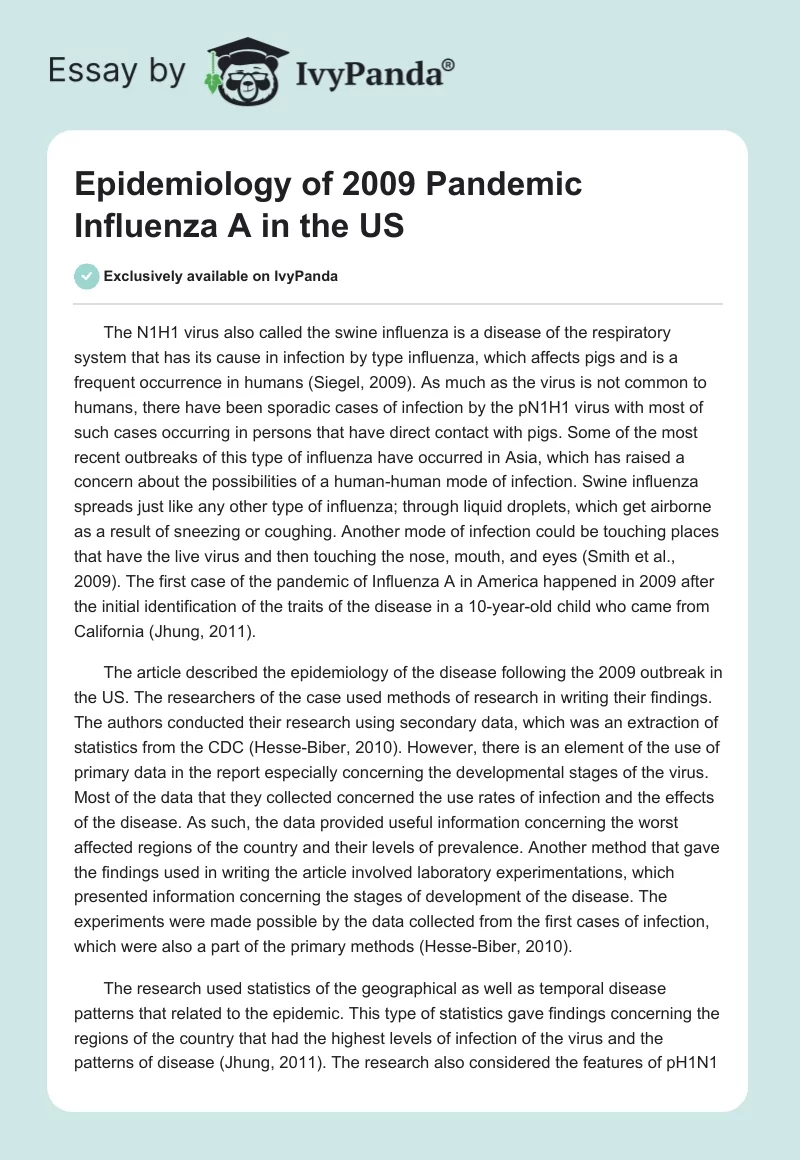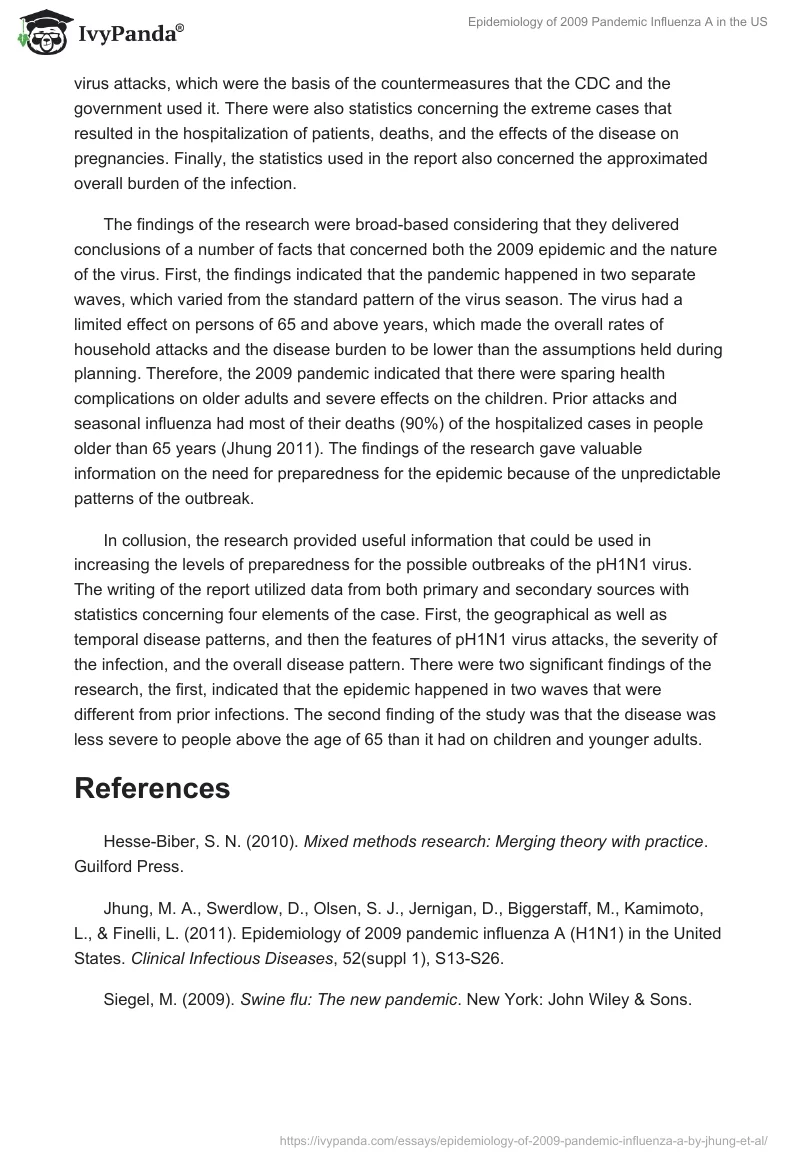The N1H1 virus also called the swine influenza is a disease of the respiratory system that has its cause in infection by type influenza, which affects pigs and is a frequent occurrence in humans (Siegel, 2009). As much as the virus is not common to humans, there have been sporadic cases of infection by the pN1H1 virus with most of such cases occurring in persons that have direct contact with pigs. Some of the most recent outbreaks of this type of influenza have occurred in Asia, which has raised a concern about the possibilities of a human-human mode of infection. Swine influenza spreads just like any other type of influenza; through liquid droplets, which get airborne as a result of sneezing or coughing. Another mode of infection could be touching places that have the live virus and then touching the nose, mouth, and eyes (Smith et al., 2009). The first case of the pandemic of Influenza A in America happened in 2009 after the initial identification of the traits of the disease in a 10-year-old child who came from California (Jhung, 2011).
The article described the epidemiology of the disease following the 2009 outbreak in the US. The researchers of the case used methods of research in writing their findings. The authors conducted their research using secondary data, which was an extraction of statistics from the CDC (Hesse-Biber, 2010). However, there is an element of the use of primary data in the report especially concerning the developmental stages of the virus. Most of the data that they collected concerned the use rates of infection and the effects of the disease. As such, the data provided useful information concerning the worst affected regions of the country and their levels of prevalence. Another method that gave the findings used in writing the article involved laboratory experimentations, which presented information concerning the stages of development of the disease. The experiments were made possible by the data collected from the first cases of infection, which were also a part of the primary methods (Hesse-Biber, 2010).
The research used statistics of the geographical as well as temporal disease patterns that related to the epidemic. This type of statistics gave findings concerning the regions of the country that had the highest levels of infection of the virus and the patterns of disease (Jhung, 2011). The research also considered the features of pH1N1 virus attacks, which were the basis of the countermeasures that the CDC and the government used it. There were also statistics concerning the extreme cases that resulted in the hospitalization of patients, deaths, and the effects of the disease on pregnancies. Finally, the statistics used in the report also concerned the approximated overall burden of the infection.
The findings of the research were broad-based considering that they delivered conclusions of a number of facts that concerned both the 2009 epidemic and the nature of the virus. First, the findings indicated that the pandemic happened in two separate waves, which varied from the standard pattern of the virus season. The virus had a limited effect on persons of 65 and above years, which made the overall rates of household attacks and the disease burden to be lower than the assumptions held during planning. Therefore, the 2009 pandemic indicated that there were sparing health complications on older adults and severe effects on the children. Prior attacks and seasonal influenza had most of their deaths (90%) of the hospitalized cases in people older than 65 years (Jhung 2011). The findings of the research gave valuable information on the need for preparedness for the epidemic because of the unpredictable patterns of the outbreak.
In collusion, the research provided useful information that could be used in increasing the levels of preparedness for the possible outbreaks of the pH1N1 virus. The writing of the report utilized data from both primary and secondary sources with statistics concerning four elements of the case. First, the geographical as well as temporal disease patterns, and then the features of pH1N1 virus attacks, the severity of the infection, and the overall disease pattern. There were two significant findings of the research, the first, indicated that the epidemic happened in two waves that were different from prior infections. The second finding of the study was that the disease was less severe to people above the age of 65 than it had on children and younger adults.
References
Hesse-Biber, S. N. (2010). Mixed methods research: Merging theory with practice. Guilford Press.
Jhung, M. A., Swerdlow, D., Olsen, S. J., Jernigan, D., Biggerstaff, M., Kamimoto, L., & Finelli, L. (2011). Epidemiology of 2009 pandemic influenza A (H1N1) in the United States. Clinical Infectious Diseases, 52(suppl 1), S13-S26.
Siegel, M. (2009). Swine flu: The new pandemic. New York: John Wiley & Sons.
Smith, G. J., Vijaykrishna, D., Bahl, J., Lycett, S. J., Worobey, M., Pybus, O. G., & Rambaut, A. (2009). Origins and evolutionary genomics of the 2009 swine-origin H1N1 influenza A epidemic.Nature, 459(7250), 1122-1125.


